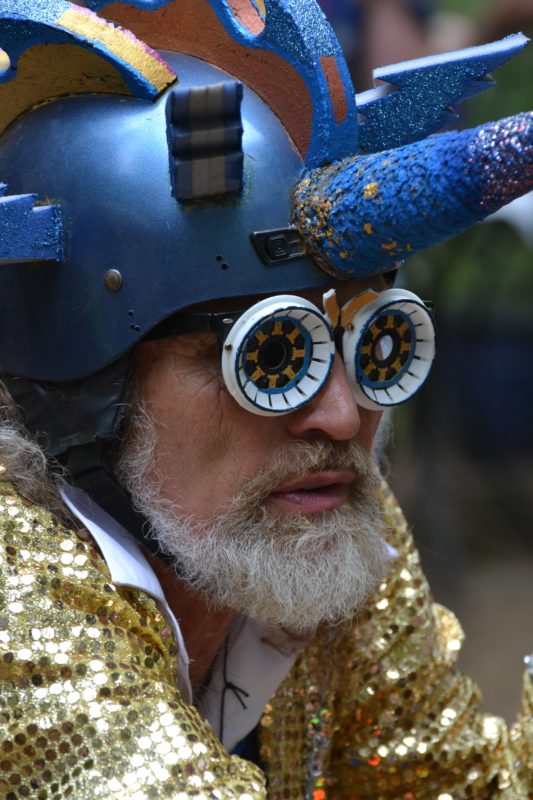 On Monday we mentioned evidence that face recognition follows different rules than other forms of recognition and is served by specialized brain tissue. But what are those rules?
On Monday we mentioned evidence that face recognition follows different rules than other forms of recognition and is served by specialized brain tissue. But what are those rules?
The first part of the answer lies in the fact that we don’t recognized faces by looking at the individual features. Instead, we recognize faces by perceiving complex relationships – the spacing of the eyes relative to the length of the nose and so on.
Common sense says that you best disguise a face by changing or hiding the features (unless you have access to a costume featured in today’s cover ….). It turns out, though, that you can much more successfully disguise someone by changing familiar proportions into something else. For example, a hat pulled low, a cap or bandana, or bangs added, hiding the forhead and therefore changing the face height, are extremely effective as a disguise.

But it is not just the relationships. People recognize faces by comparing the relationships of the face in question to their understanding of an average or typical face with its relationships. As a result, people are actually more successful in recognizing portraits that distort the face, slightly exaggerating the ways in which the face differs from the average face. You can take this too far, and lose recognition, but a slight charicature helps recognition.
In fact, with a bit of computer manipulation you an distort a photograph by slightly exaggerating the relationships. You then show people the actual (accurate!) photograph of someone and then the distorted one and ask them which photo is a better likeness. People choose the exaggerated photo, apparently thinking that the inaccurate image is more accurate.
Of course, caricatures are perhaps more common in editorial cartoons than in fine art. However, modern portraiture has really committed to showing the essence of a person rather than his or her photographic likeness. Maybe then, the modern artists are more sensitive to psychological mechanisms and less to the demands of visual accuracy.
https://www.wired.com/2011/07/ff_caricature/.



I came across an article about (gorgeous)photographs of transgender people who seem to exaggerate stereotypic notions of femininity or masculinity in terms of outfits, make-up, body shapes and musculature. I wonder if we are seeing a parallel here with regard to being recognizable – given how little society recognizes them, in every meaning of the word, maybe slight caricature is the visual equivalent of “woman!” or “man!” – just wondering.






